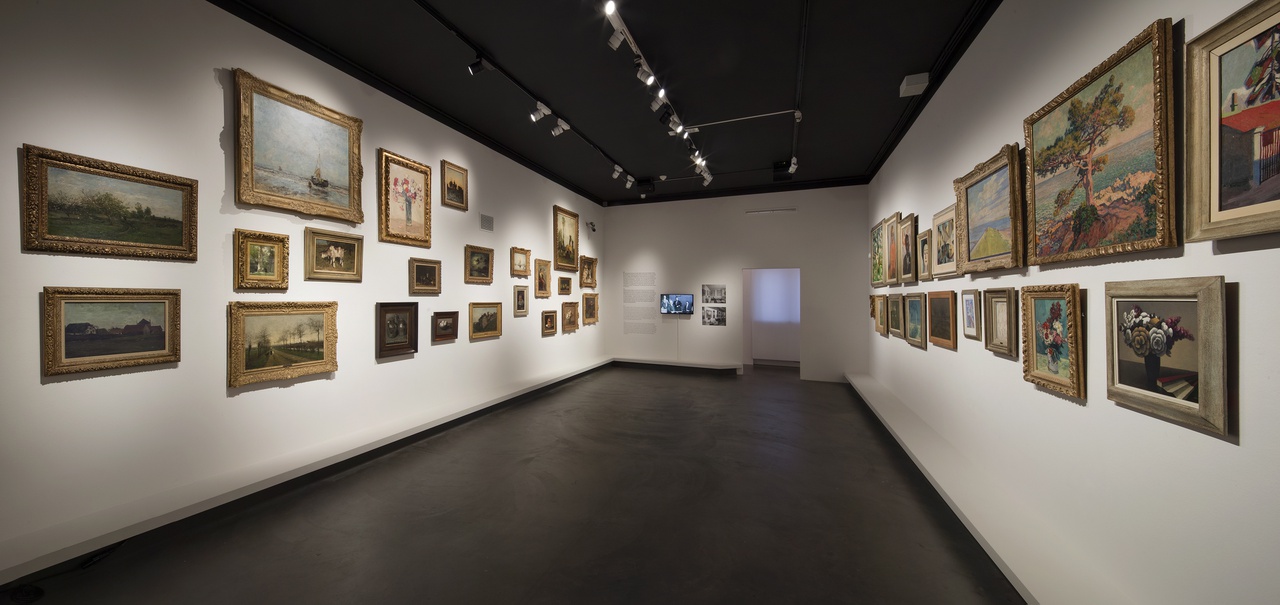Van Baaren collection
With its nineteenth- and early twentieth-century collection of visual art, the Van Baaren collection, which was acquired privately by Josephina and Lambertus van Baaren in Utrecht between 1925 and 1964, is an integral part of the Centraal Museum that serves as a window on the international developments in painting. It is a good example of a typical private collection created under the influence of the art educator Bremmer. The collection of art from the nineteenth and early twentieth century was instantly dramatically improved with its arrival at the museum in 1980. The masterpieces in this sub-collection include works by Vincent van Gogh, Auguste Herbin, Jean Metzinger, Floris Verster, Johan Bartold Jongkind and Piet Mondriaan.
Van Baaren collection in Discover the collection online
Dick Bruna collection
In 2000, the Centraal Museum organised a Dick Bruna retrospective (Utrecht 1927- 2017 Utrecht). The special exhibition coincided with the start of transferring the thousands of designs, drawings, posters, clippings, etc. to the museum. Bruna gained international recognition for his creation nijntje ('miffy'). The book covers and posters he designed for publisher A.W. Bruna & Zoon from 1952 onwards deserve at least as much attention, too.
Dick Bruna in Discover the collection online
The Rietveld Schröder Archives
Truus Schröder deeply admired Rietveld. She was one of the first to recognise his talents and encourage him to become an architect. The Schröder House assignment was a breakthrough in his career. She subsequently supported Rietveld in all sorts of ways. Her efforts included collecting and saving his drawings, photos of his work, correspondence, clippings and other records. Rietveld's studio was on the ground floor of the Schröder House from 1924 until 1933. He and Truus Schröder frequently worked together on important projects. He moved in with her after his wife's death in 1957. The Schröder House, the projects between 1924 and 1933 and the period from 1958 onwards are exceptionally well-documented. The archives include a wealth of information about the other work, too. The Centraal Museum assumed management of the Schröder House and the Rietveld Schröder Archives in 1985. Thanks to donations and purchases, it has almost doubled since then. Consequently, the archive is an important source for research into Rietveld's life, ideas and work, just as Truus Schröder had envisioned.
Rietveld Schröder Archive in Discover the collection online
Theo van Doesburg collection
Theo van Doesburg was born Christian Emil Marie Küpper on 30 August 1883. He quickly took the name of his stepfather Theodorus Doesburg, the one who actually raised him, and later added the 'van' prefix to his surname Van Doesburg was an art critic, painter, poet, Dada performer and founder of De Stijl. In 1920, he met Nelly van Moorsel, a gifted pianist who performed avant-garde compositions on the Dada nights. Van Doesburg and Van Moorsel became inseparable. After Van Doesburg's death in 1931, Nelly dedicated herself to promoting De Stijl and the work of her late husband. Nelly passed away in 1975. Nelly left the estate to her niece, Wies van Moorsel. Van Moorsel in turn gave the enormous collection of sketches and designs by Van Doesburg to the Rijksdienst Beeldende Kunst, which is now the Cultural Heritage Agency of the Netherlands. During preparations in 1999 for the major Theo van Doesburg retrospective (2000), the Centraal Museum decided to accept the collection on permanent loan, making the work and ideas of this artist from Utrecht available to study.
The PUG collection
The Provincial Utrecht Society of Arts and Sciences (Provinciaal Utrechts Genootschap van Kunsten en Wetenschappen - PUG) began collecting 'Antiquities' in 1841. These included everything from Roman glasses and cups to gold and silver coins and jewellery, beautifully decorated terra sigillata earthenware, oil lamps, writing implements and belt buckles. The impressive collection of some 15,000 archaeological finds mainly consists of Roman objects, but prehistoric and medieval times are also represented. A number of the objects were excavated in and around Utrecht, in areas such as the Dom Square and De Meern, and at Fort Vechten.
The Centraal Museum and PUG collection have been closely connected since 1921. The collection was first exhibited in the basement of the museum and then later moved to the neighbouring Foundation of Renswoude, where it was to stay until 2010.
In 1995, the Provincial Utrecht Society conveyed the collection to the municipality of Utrecht.
